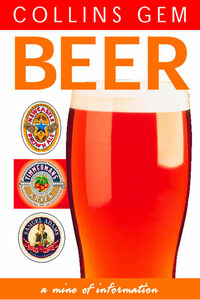I would like to thank all the various breweries and trade organisations who have helped in the assembly of material for use in this book.
In particular, for all kinds of help, my thanks go to: Trevor Havard (Beeston Maltings), Paul Corbett (Charles Faram Hops), Miles Jenner (Harveyâs Brewery), Tim Hampson and Jan Booth (British Licensed Retailers Association), Phil Johnson (Beer Direct), Michael Cook (Premier Beers), Chris Marchbanks, Keith Thomas (Brewlab), Michael Hardman, John Nancollis, Iain Loe (CAMRA), and Peter Crombecq (EBCU).
Ronald Atkins
London, 1997
Thereâs no mention of it in the Book of Genesis, but beer does go back a very, very long way. Our distant ancestors discovered how to grow barley and make primitive versions of bread and cakes. Juice from damp barley, left uncovered and therefore likely to pick up wild yeast floating in the air the way Belgiumâs lambic beers are brewed to this day, became one of the first alcoholic beverages. Beer brewing seems to have begun in the Middle East by 3000 BC at the latest, in the terrain between the modern cities of Baghdad and Basra (Mesopotamia, Babylon and Sumer).
Something resembling the modern brewing industry soon emerged. Haphazard wetting and drying was replaced by germinating the barley in earthenware pots and/or âkilningâ it by the fire and then using it, as malt is today, in all kinds of culinary activities, not just to make beer. As a protection against swallowing specks of yeast and other floating matter, the Egyptians usually drank their beer through a reed, an early version of the modern straw. The Egyptians also brewed with malted wheat: a recently excavated kitchen in the Sun Temple of Queen Nefertiti included a brewery whose contents were analysed and, eventually, reproduced by Scottish-Courage as a mash of malted emmer â the brand of wheat found in the old brewhouse â and flavoured with juniper and coriander, two of the spices grown in Egypt that would have been added to counteract the malt flavour. Some years earlier, the Anchor brewery in San Francisco had based a beer on Babylonian practice, using bread laced with honey in the mash and then boiling it with dates.
From Egypt, the secret of making beer spread around the known world. The Greeks provide possibly the first instances of wine-snobbery, relegating beer as the drink for those at the lower end of the social ladder. Ancient Romans did much the same, but they recognized the value of beer, perhaps discovered in the lands they took over, by giving it to their all-conquering soldiers (these were said to march on beer and vinegar). By the time they reached England and Wales, the Romans knew enough about beer to be unimpressed by the local versions, and may have encouraged a more modern approach to malting and brewing.

Climatic conditions determine what food and drink a country produces. Northern Europe, whose moderate temperatures and substantial rainfall are not conducive to growing grapes, suited the growing of barley, whereas in the hotter, but non-wine- producing countries of South-East Asia, beer would be brewed with a substantial amount of rice. Brewing beer involves more complex processes than wine- making and this encouraged the development of a technology that involved the systematic skimming of yeast from one brew and adding it to the next, converting barley into different types of malt (by wetting and then kilning it) and manufacturing special vessels to heat and boil the mixture (known as âwortâ, from the Old English wyrt) and then let the result ferment. The British may have introduced wooden casks, in which they stored mead and cider, to the beer industry. The word âaleâ, soon adapted by most of the brewing countries, derives from the Danish word for oil, which is what the Vikings called their drink. The origin of the word âbeerâ itself can be found in the Old English beor and the German bier, among others.








